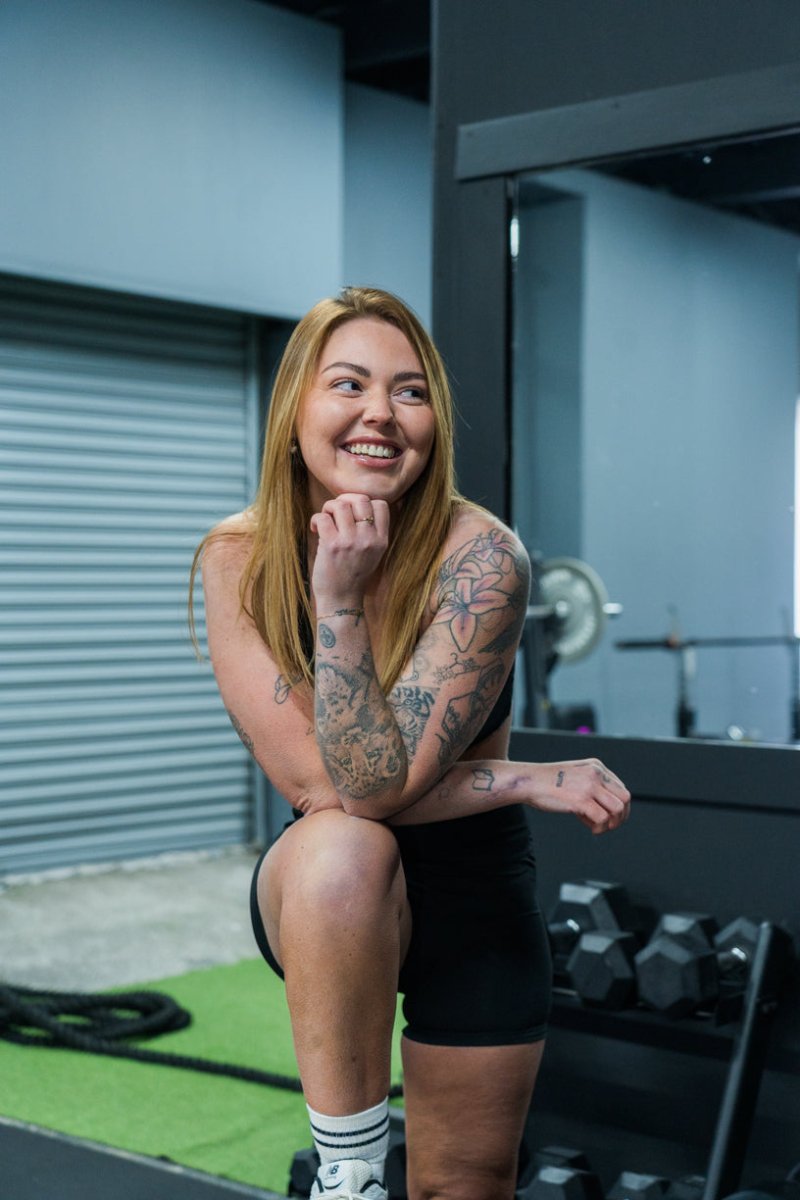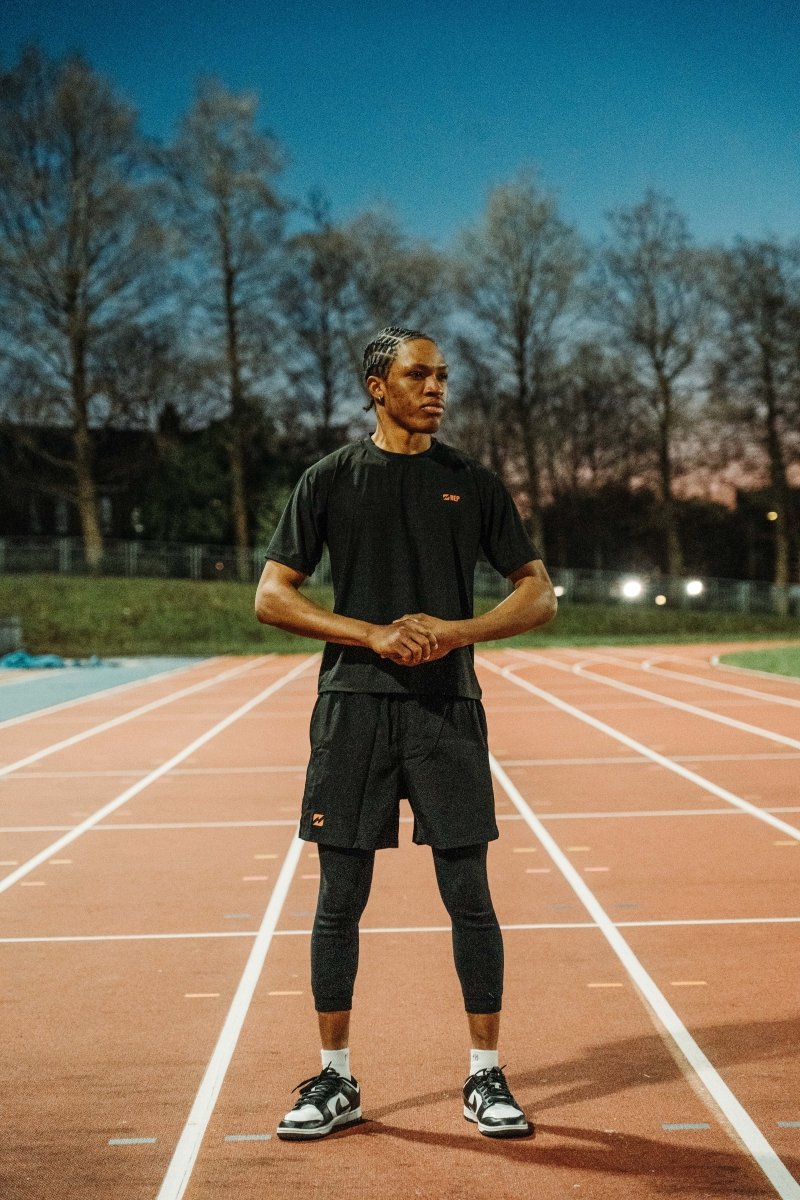![Leg Workouts At The Gym [2025 Guide]](http://repworld.co.uk/cdn/shop/articles/leg-workouts-at-the-gym-2025-guide-266064.jpg?v=1749559107&width=800)
Leg Workouts At The Gym [2025 Guide]
There’s a reason top trainers tell you not to skip leg day. Leg workouts at the gym are more than just a challenge—they’re the secret to building all-body strength, real endurance, and impressive athletic performance. Strong legs don’t only look good; they power you through squats, boosts in confidence, and even daily tasks. If you’re after real gains—in muscle, metabolism, or stamina—you’ll need a leg routine that goes beyond the basics.
Training lower body in the gym gives you access to kit like squat racks, barbells, and resistance machines, but there are also great routines that rely only on your bodyweight or free weights. If you’re new to strength training, or stuck on where to begin, this guide breaks down the essentials for building bigger, stronger legs. Get ready for improved muscle definition in your quads, hamstrings, and glutes—and noticeable performance boosts in and out of the gym.
You’ll also find ways to supercharge your nutrition and balance different muscle groups, all rooted in UK health and fitness advice. Ready to grow? Here’s everything you need to know about maximising your leg workouts at the gym.
The Science of Effective Leg Workouts at the Gym

Leg workouts at the gym aren’t just good for sculpting muscle. They’re a top way to boost overall fitness. Your legs contain the largest muscles in your body, including the quadriceps, hamstrings, glutes, and calves. Targeting all these muscle groups in one session ramps up your calorie burn and supports better hormone balance. The result? Faster metabolism, stronger joints, and genuine core stability.
Big compound lifts—think back squats, deadlifts, and lunges—should sit at the core of your gym routine. These moves work several muscles at once, making your workouts more efficient. On top of the strength benefits, multi-joint exercises improve coordination and mobility. Research shows that engaging these large muscle groups can increase testosterone and growth hormone production, driving muscle gains and fat loss for both men and women.
The UK’s NHS physical activity guidelines recommend at least two sessions of strength training a week. Your legs can handle heavy work, so they respond well to higher loads and lower reps—but beginners should always prioritise good form over heavy weights. Don’t forget: warm up with light cardio and dynamic stretching to prime your muscles, and finish with mobility work to stay limber and injury-free.
Your Ultimate Leg Workouts at the Gym Plan

Training your legs in the gym opens up bigger lifts and smarter progressions. Use this plan to build muscle, improve stability, and ignite growth. The routine below pairs strength and hypertrophy moves using barbell, machine, and dumbbell exercises. You’ll get full coverage on quads, glutes, hamstrings, and calves. Aim to perform the circuit once or twice per week, leaving at least 48 hours for recovery between sessions.
- Barbell Back Squat: 4 sets of 6-8 reps. Focus on driving your hips back and keeping your chest tall. This compound move targets the whole lower body—especially quads and glutes.
- Romanian Deadlift: 3 sets of 8-10 reps. Great for hamstrings and glutes. Keep the bar close to your shins and your back flat.
- Leg Press Machine: 3 sets of 10-12 reps. Adjust foot placement to shift loading between quads and glutes.
- Walking Lunges with Dumbbells: 3 sets of 12 steps per leg. This leg workout with dumbbells builds balance and single-leg strength.
- Leg Extension or Seated Hamstring Curl: 3 sets of 12-15 reps. Machine isolation to finish off quads or hamstrings.
- Standing Calf Raise: 4 sets of 15-20 reps. Slow the tempo and squeeze at the top for the best burn.
Keep rest periods to 60–90 seconds between sets. Track your weights and aim to improve by adding small increments each week. If you’re lifting heavy, ask for a spot from a reliable gym mate or coach.
For those looking to add variety to their leg session or prefer leg workouts at home, read our full rundown on back and biceps exercises for a complete weekly split.
Leg Workouts with Dumbbells: Gym and Home Variations
You don’t need a fully-kitted gym to build serious leg strength. Leg workouts with dumbbells deliver results, whether in a public gym, uni gym room, or even your living room. Dumbbells offer flexible resistance, making them ideal for everything from goblet squats to explosive split jumps. By using free weights, you engage more stabiliser muscles, developing better balance and joint health.
Try adding these leg workouts with dumbbells into your gym or home routine:
- Goblet Squat: Hold a heavy dumbbell at your chest, squat deep, and keep your heels planted. This move targets quads, glutes, and core in one go.
- Bulgarian Split Squat: Rest your back foot on a bench, hold dumbbells by your sides, and squat low. You’ll build glute and hamstring strength while ironing out imbalances.
- Single-Leg Romanian Deadlift: Hold one or two dumbbells, stand tall, and hinge forward on one leg. Great for your glute and hamstrings workout and boosting ankle stability.
- Sumo Dumbbell Deadlift: Stand with feet wide and toes out. Hold a dumbbell between your legs and squat down. Perfect for inner thighs and glutes.
Combine two or three of these moves in a circuit, doing 10–15 reps of each, moving quickly between exercises for an explosive, high-intensity session. For those working out outside the gym, bodyweight squats and lunges can also keep your progress going. Find more on at home exercise ideas here.
Building a Stronger Glute and Hamstrings Workout

A strong lower body isn’t just about quads. Serious leg workouts at the gym must include glute and hamstrings workout options. This is key for power, sprint speed, and injury prevention—especially for those who run or play sport. Targeting the back of the legs balances out squat-heavy plans to protect your knees and lower back.
Effective glute and hamstrings workouts often use hinge movements and hip extension exercises. Build your routine around hip thrusts, Romanian deadlifts, and hamstring curls. For glutes, using a bench or step for hip thrust variations increases activation. Focus on squeezing your glutes at the top and maintaining tension throughout each set. Always aim for quality reps rather than just chasing numbers; mind-muscle connection makes a huge difference.
Don’t ignore single-leg moves like step-ups or split squats. These not only build strength but improve stability for running, jumping, and daily life. Strengthening the back of your legs also helps combat tightness from long hours sitting at work or uni.
For best results, finish with stretches for your hip flexors, glutes, and hamstrings. Consistent mobility work keeps your gains safe and sustainable. Read more on recovery and complete training splits at the REP blog.
Fuel Your Leg Workouts at The Gym and Maximise Recovery
Your results from leg workouts at the gym depend just as much on what you eat as what you lift. Heavy lifts break muscle down—nutrition builds it back, stronger. Aim for a mix of lean protein, complex carbs, and healthy fats throughout your day. Focus on eating 1.2–2.0g of protein per kilogram of bodyweight daily to support muscle repair and growth. The British Nutrition Foundation and NHS both back this target for active adults.
Don’t overlook carbs. They’re your body’s preferred source of energy for big lifts and endurance training. Before sessions, go for slow-release carbs like oats or brown rice. After training, pair protein with carbs to quickly replenish muscle stores and kickstart recovery.
If you find yourself short on time during busy weeks, planning meals around workouts can make a huge difference in results. Get practical meal prep advice from our guide to high-protein meal prep and see our top ideas for meal prep for weight loss.
Hydration is equally key—your muscles need water to perform and recover. Aim to drink regularly through your sessions and throughout the day. If you sweat a lot in the gym or play sport, consider adding electrolytes to keep performance consistent.
Take Action: Build Powerful Legs for Strength and Athleticism
Leg workouts at the gym deliver more than just size—they boost every aspect of your fitness, from raw strength to agility, and confidence. Build your routine around heavy compound lifts, but don’t skip on single-leg moves or isolation for the hamstrings and calves. If equipment is limited, leg workouts with dumbbells and bodyweight circuits still make serious gains possible.
Supported by smart nutrition and recovery, you’ll see muscle definition, better posture, and all-around power. Keep training consistently, increase the challenge every few weeks, and track your progress. For full-body training splits and more expert tips, read more on the REP blog. Your strongest legs start with your next session—get moving.
Leg Workouts At The Gym: FAQ's
1. Why is leg day important for overall fitness?
Strong legs improve your total body strength and help burn more calories. They also boost athletic performance and make everyday tasks easier.
2. What are the best exercises for building leg muscle?
Compound moves like squats, deadlifts, and lunges work multiple muscles at once. These exercises help you build strength and muscle faster.
3. Can I build leg strength without a gym?
Yes, dumbbell exercises and bodyweight moves can build serious leg strength anywhere. You don’t need fancy equipment to get results.
4. How often should I train legs each week?
Train legs 1 to 2 times a week, allowing at least 48 hours to recover between sessions. This helps your muscles grow stronger and avoid injury.
5. What nutrition supports leg muscle growth?
Eating enough protein and complex carbs fuels muscle repair and energy. Staying hydrated also supports better performance and recovery.


